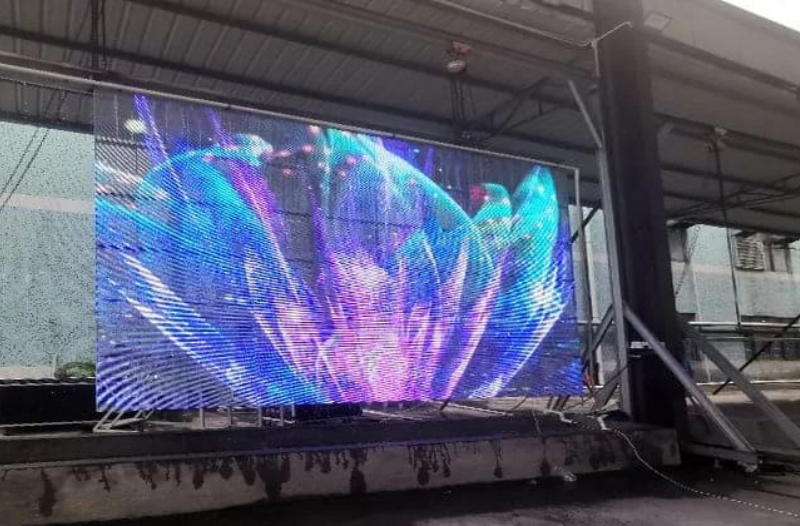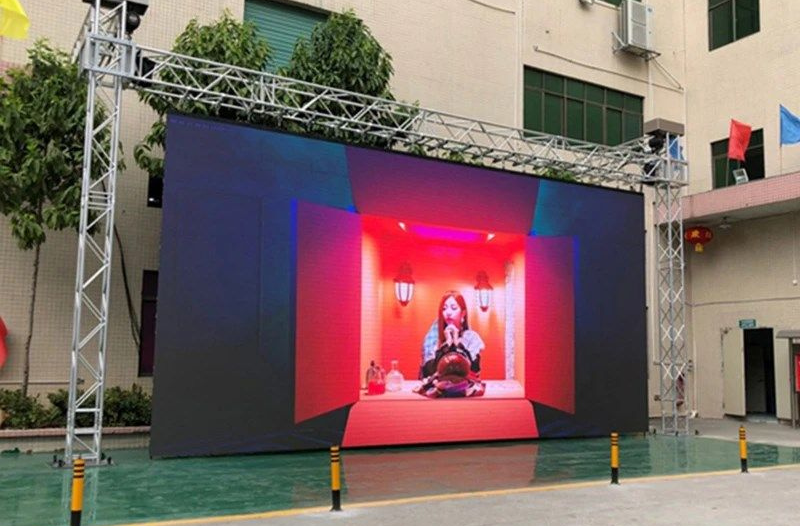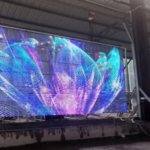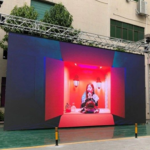Table of Contents
An Outdoor LED Display is a versatile technology used for digital signage in public spaces, offering high brightness, durability, and flexibility for various environments. Here’s an in-depth look at every aspect of outdoor LED displays:

1. Key Components of Outdoor LED Displays
- Pixel Pitch: Refers to the distance between two adjacent pixels, measured in millimeters. For outdoor displays, the pixel pitch is generally larger (ranging from 4mm to 20mm) as the viewing distance is typically greater. A smaller pixel pitch provides better resolution but increases the cost.
- Brightness (measured in nits): Outdoor LED displays require high brightness to remain visible in direct sunlight. Most outdoor LEDs have brightness levels ranging from 4,000 to 10,000 nits, depending on the specific application and location.
- Resolution: While not as high as indoor displays due to the larger pixel pitch, the resolution is still critical for visibility at long distances. Large billboards might have lower pixel density since they are viewed from afar, while smaller displays or those closer to foot traffic may require higher resolution.
2. Technology Types
- SMD (Surface-Mounted Diode): These are common in outdoor displays, offering good visibility and color reproduction even at lower pixel pitches. SMD LEDs are durable and suitable for outdoor use, providing better angles of view.
- DIP (Dual In-line Package): These are older but still used for high-brightness applications. DIP LEDs offer better brightness but can be bulkier and offer fewer color options than SMD.
3. Durability and Weather Resistance
Outdoor LED displays are designed to withstand harsh environmental conditions, including:
- IP Ratings (Ingress Protection): The IP rating specifies how well the display is protected against dust and water. For outdoor displays, an IP65 rating is standard, ensuring complete protection from dust and low-pressure water jets.
- Temperature Resistance: These displays can function in extreme temperatures, from cold winters to hot summer days, without losing performance.
- UV Protection: Outdoor LEDs often feature materials resistant to ultraviolet (UV) rays to prevent color fading or damage over time.
4. Mounting and Installation
- Fixed Installation: Outdoor LED displays can be permanently mounted on buildings, poles, or custom-designed structures for long-term use. These displays are often used for billboards, building wraps, or public information boards.
- Rental and Portable Displays: Some outdoor LED displays are designed for temporary setups, such as at events, concerts, or sports stadiums. These displays are modular and lightweight, making them easy to assemble and disassemble.
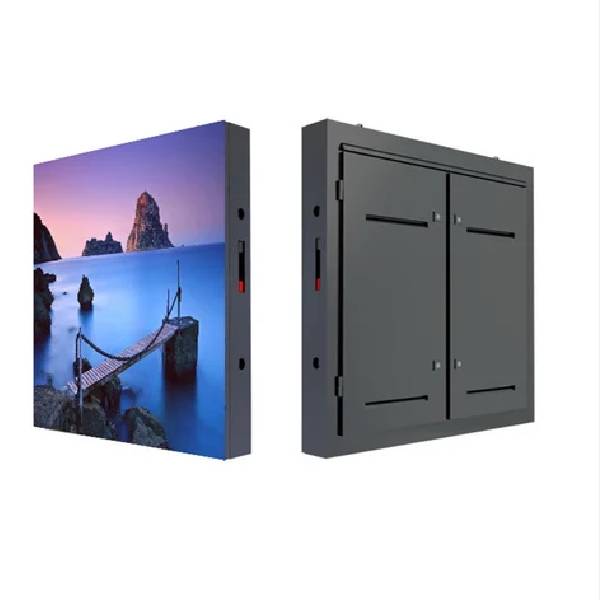
5. Advantages of Outdoor LED Displays
- High Visibility: With brightness levels exceeding 5,000 nits, outdoor LED displays remain highly visible even in direct sunlight, ensuring advertisements or information are clear at all times.
- Longevity: LEDs have a lifespan of 100,000+ hours, meaning they can last years before requiring significant maintenance or replacement.
- Energy Efficiency: LED technology is energy-efficient, providing significant savings compared to older technologies like neon or incandescent signage.
- Dynamic Content: Outdoor LEDs can display a wide range of dynamic content, including images, videos, and even real-time data (weather updates, traffic information), making them highly versatile.
- Wide Viewing Angles: Thanks to advancements in LED technology, outdoor displays offer 160-degree horizontal viewing angles, ensuring visibility from a variety of perspectives.
6. Common Applications
- Advertising Billboards: Large-scale LED billboards are the most common use case for outdoor LED displays, especially in urban areas or highways where passing traffic and pedestrians can view them from a distance.
- Sports Stadiums: LED displays are used for scoreboards, advertisement panels, and fan engagement during events.
- Concerts and Festivals: Temporary LED setups are common at large outdoor events to enhance audience engagement with visuals, advertisements, and event information.
- Transportation Hubs: Airports, bus terminals, and train stations use LED displays for information boards and advertisements.
- Smart City Infrastructure: As part of smart city initiatives, outdoor LED displays are being integrated into public infrastructure for real-time information on traffic, weather, and city services.
7. Challenges and Considerations
- Initial Cost: While LEDs are energy-efficient in the long run, the initial investment in outdoor LED displays can be high, especially for large-scale, high-resolution setups.
- Maintenance: Despite their durability, outdoor displays may require regular maintenance to ensure full functionality, particularly in harsh climates.
- Power Consumption: Although efficient, outdoor LEDs with higher brightness consume more power than their indoor counterparts. However, this is mitigated by advanced power-saving features in modern LEDs.
- Content Management: Managing and updating content requires reliable software systems that can control multiple displays from a central location, especially in cases where the display networks span a large area.
8. Maintenance and Troubleshooting
- Module Replacement: Outdoor LED displays are modular, meaning individual LED panels can be easily replaced if damaged or malfunctioning.
- Temperature Monitoring: Some outdoor displays come with built-in sensors to monitor temperature and ensure optimal performance, preventing overheating.
- Color Calibration: Periodic recalibration is often needed to maintain color accuracy, especially when displays are used for long hours.
9. Future Trends in Outdoor LED Displays
- 8K Resolution Displays: Though typically used indoors, advancements in outdoor LEDs are pushing for ultra-high-definition displays that can show more detailed images and videos even from a distance.
- Transparent and Flexible LEDs: These new technologies are being developed for outdoor environments, making them ideal for architectural installations where aesthetics and visibility are important.
- Interactive Features: Some outdoor displays incorporate touch-sensitive or motion-detection features, allowing for interactive engagement with the public.
- Energy Harvesting Displays: Future displays may incorporate solar panels or other energy-harvesting technologies to further reduce energy consumption.
10. Regulatory and Environmental Considerations
- Light Pollution: In urban settings, outdoor LED displays must adhere to local regulations regarding brightness to avoid contributing to light pollution. Some displays automatically adjust brightness based on the time of day or ambient light levels.
- Sustainability: LED displays are more eco-friendly than older technologies due to their energy efficiency, and some manufacturers are focusing on sustainable materials and energy-saving technologies.
TRENDING
Ideal Uses for Outdoor Fixed LED Screens
Outdoor Fixed LED screens are a powerful tool for enhancing brand…
What is so Unique About Transparent LED…
You have most certainly heard of LED visual displays. They are…
Why Are Rental LED Screens the Right…
Getting an LED screen on rent is probably not a new…
LED Displays: No. 1 Choice for Indoor…
Unlocking the Power of Outdoor Waterproof LED Video Walls In the…
2024 Trends and Innovation: Exploring the Future…
Introduction LED technology has revolutionized the way we illuminate and display…
Durga Puja Special: Hire LED Screens and…
Durga Puja is a grand celebration that captivates millions across the…
FEATURED POST
Ideal Uses for Outdoor Fixed LED Screens
Outdoor Fixed LED screens are a powerful tool for enhancing brand visibility. Equipped with sharp clarity and bright displays, these screens ensure your content is visible from great distances, making them ideal for reaching a broad audience. Whether for advertising, events, or entertainment, outdoor LED screens are designed to attract attention and leave a lasting impression. Key Uses for Outdoor Fixed LED Screens It commonly known as LED advertising screens,…
What is so Unique About Transparent LED…
You have most certainly heard of LED visual displays. They are surely an important addition to any event, but transparent LED visual…
Why Are Rental LED Screens the Right…
Getting an LED screen on rent is probably not a new idea, but it is the right one. LED screens serve various…
LED Displays: No. 1 Choice for Indoor…
Unlocking the Power of Outdoor Waterproof LED Video Walls In the LED Display technology, outdoor waterproof LED video walls stand out as…
2024 Trends and Innovation: Exploring the Future…
Introduction LED technology has revolutionized the way we illuminate and display visuals, impacting various industries from advertising to home lighting. As we…




